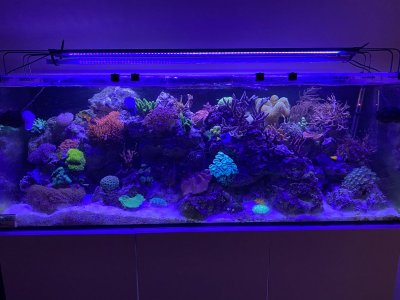Hi guys!
Hitting the 8 months mark with my new tank and I have Quite a good amount of rocks. I was wondering if some of you have a tank, which uses up nitrates faster than they are produced. (No water changes or carbon dosing)
I know it takes a long time to establish a decent colony size of bacteria that turn nitrate into nitrogen gas.
If you do, could you maybe answer the following: Tank age, nitrate consumption over a certain time, tank size, livestock.

Hitting the 8 months mark with my new tank and I have Quite a good amount of rocks. I was wondering if some of you have a tank, which uses up nitrates faster than they are produced. (No water changes or carbon dosing)
I know it takes a long time to establish a decent colony size of bacteria that turn nitrate into nitrogen gas.
If you do, could you maybe answer the following: Tank age, nitrate consumption over a certain time, tank size, livestock.




















